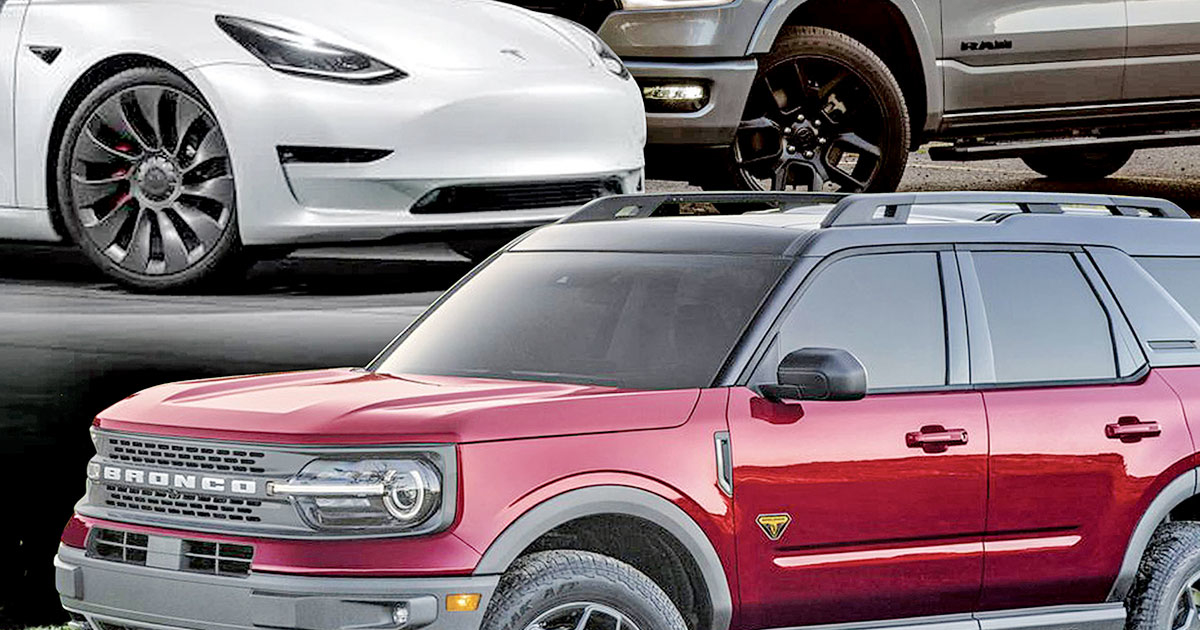
WASHINGTON — For the second consecutive year, Ford Motor Co. has reported the most U.S. vehicle recalls of any automaker, partial NHTSA data shows.
Through Dec. 19, Ford had issued 65 recalls affecting more than 8.6 million vehicles in 2022. In 2021, the automaker issued 53 recalls covering nearly 5.4 million vehicles.
The U.S. recall data comes as Ford continues to work on improving manufacturing operations and combating quality issues, particularly on its high-profile vehicles.
In November, Ford recalled nearly 634,000 Bronco Sport and Escape crossovers globally for fire risks. Months before, the automaker had issued a stop-sale to dealers as part of its recall of nearly 50,000 Mustang Mach-E crossovers for potential power loss. Federal investigators also launched an investigation last year into “catastrophic engine failures” in the popular 2021 Bronco SUV.
“While we don’t ever want customers inconvenienced by problems with our products, when it’s necessary, we’re going to use recalls to call attention to them,” Ford spokesperson Maria Buczkowski told Automotive News.
She added that, as Ford CEO Jim Farley has said, “we’re improving our launch and initial quality, but our overall quality isn’t as good as it should and can be. That’s why we’re deploying a comprehensive end-to-end process to raise quality and keep it high — in design, production, delivery and after-sale service and support.”
Ford’s overarching goal is to prevent quality issues from happening in the first place, Buczkowski said, but “when that doesn’t happen, we’re using technology to detect and resolve them before they become a bigger deal for more customers.”
The recall numbers could mean Ford is taking a more conservative approach to addressing potential defects, said Ray Roth III, who leads the automotive recall practice at investment bank and advisory firm Stout.
“NHTSA can’t look at every single defect and initiate the recalls,” he said. “To a large extent, it’s self-reporting.”
Roth also said recall totals would need to factor in production volume to make comparisons among automakers.
“Ford is a very large manufacturer, so they’re producing a lot of vehicles,” he said.
More new models also can mean more problems when they first enter the market, said Chris Sutton, vice president of automotive retail at J.D. Power.
“If you have a lot of new models out in the market, it’s more likely that you’re going to see quality issues surface in the first year and then those will smooth out over the subsequent years,” Sutton said.
The impact of recalls on a customer’s likelihood to return for service or to repurchase a vehicle from the brand is “pretty minor,” he said.
“Most customer service work, depending on the type of work that was, 35 percent of the customers said they’ll definitely come back and repurchase that brand,” said Sutton, citing a 2022 J.D. Power Customer Service Index study. “If a customer comes in on a recall, that goes down to 32 percent of the customers [who] said they definitely will repurchase the brand.”
As vehicles are equipped with more high-tech features, the number of callbacks related to electrical systems and rearview camera defects also appear to be rising, recall experts said.
“Any time you add new tech, it does come with new risks that OEMs have to be aware of,” said Chris Harvey, senior vice president of client services at Sedgwick, which helps businesses across industries, including automotive, manage product recall and remediation challenges. “I think we’ll continue to see some of those issues when the technology in the auto industry increases, just like we’ve seen with other industries.”
Michael Brooks, executive director of the Center for Auto Safety, said he tracked 34 recalls related to rearview cameras that are used to prevent back-over accidents through mid-December.
“There were 19 the year before, 16 in 2020, 13 in 2019,” Brooks said. “In 2018, they were just mandated.”
Brooks also expressed concern about the longevity of electrical components as vehicles age.
“We’re still not sure that the manufacturers have found a great way to make sure that some of these bells and whistles they’re putting on cars are going to be able to last for the average life span of the vehicle,” he said. “So we’re a little worried that into the future — 10 years from now, maybe less — that some of these components are going to start to fail early.”